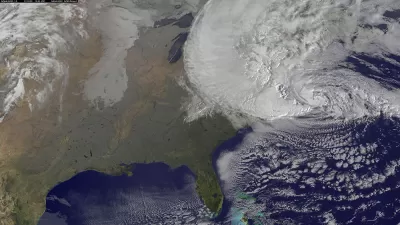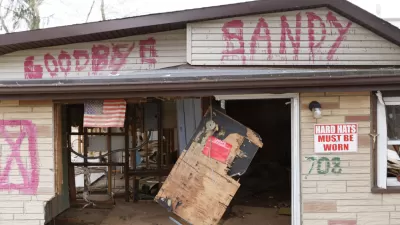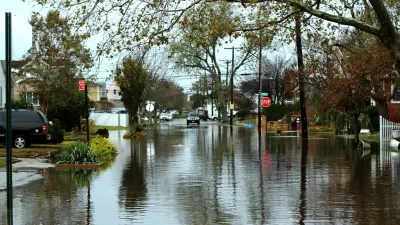The new boardwalk at Rockaway Beach shows how sea level rise is requiring new design and infrastructure decisions for the resilience of coastal communities.

"Beachgoers in this New York City oasis [of Rockaway Peninsula] can now flip-flop along a fully rebuilt boardwalk, one that reflects a coastal reimagination underway along the Mid-Atlantic and that heralds the staggering costs ahead of adapting to a changing climate," reports John Upton.
The old wooden boardwalk at Rockaway Beach "has been replaced by more than five miles of sand-toned concrete atop 50 million pounds of sandbags and a retaining wall that holds in place new sand dunes," writes Upton. The design will "protect residents and residences from storm surges."
The article includes in-depth reporting on the experience of Hurricane Sandy on Rockaway beach, along with all the details and context for the new boardwalk and coastal resilience project.
For more information on the fanfare for the project's opening to the public just before Momorial Day weekend, see articles by Bill Parry for the Times Ledger and Katie Honan for DNA Info.

FULL STORY: New York Boardwalk Shows Climate Adaptation Costs

Trump Administration Could Effectively End Housing Voucher Program
Federal officials are eyeing major cuts to the Section 8 program that helps millions of low-income households pay rent.

Planetizen Federal Action Tracker
A weekly monitor of how Trump’s orders and actions are impacting planners and planning in America.

Ken Jennings Launches Transit Web Series
The Jeopardy champ wants you to ride public transit.

New Mexico Aging Department Commits to Helping Seniors Age ‘In Place’ and ‘Autonomously’ in New Draft Plan
As New Mexico’s population of seniors continues to grow, the state’s aging department is proposing expanded initiatives to help seniors maintain their autonomy while also supporting family caregivers.

USDOT Waters Down Self-Driving Car Regulations
The agency is reducing reporting requirements for autonomous vehicles and cars with self-driving features, prompting concern among safety advocates who say transparency is essential to the safe deployment of AV technology.

‘Minnesota Nice’ Isn’t so Nice When You Can’t Find a Place to Live
The Economic Development and Housing Challenge Program can help address the scourge of homelessness among Indigenous people.
Urban Design for Planners 1: Software Tools
This six-course series explores essential urban design concepts using open source software and equips planners with the tools they need to participate fully in the urban design process.
Planning for Universal Design
Learn the tools for implementing Universal Design in planning regulations.
Heyer Gruel & Associates PA
Ada County Highway District
Institute for Housing and Urban Development Studies (IHS)
City of Grandview
Harvard GSD Executive Education
Toledo-Lucas County Plan Commissions
Salt Lake City
NYU Wagner Graduate School of Public Service





























